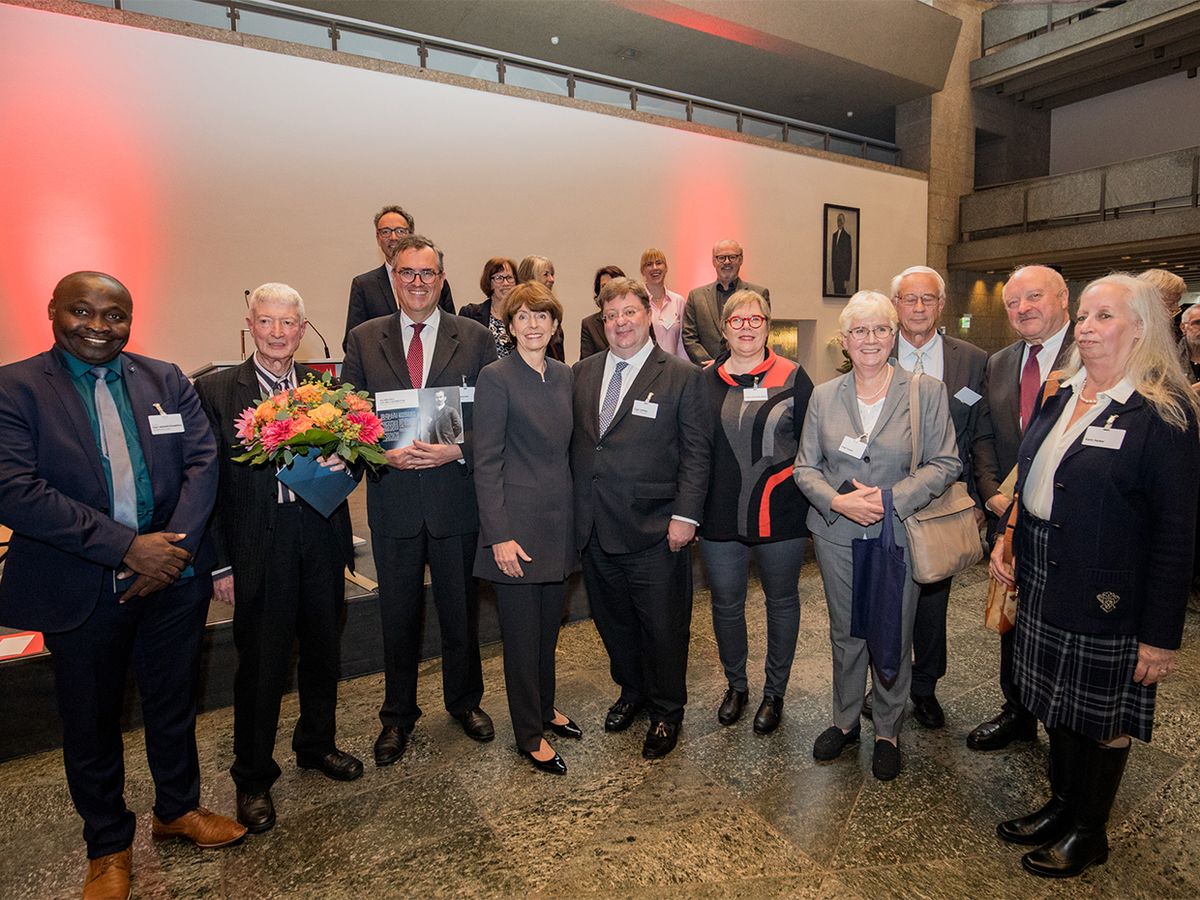THE INSTITUTEA device invented more than 100 years ago to prevent ships from running into each other in inclement weather was the forerunner to today’s radar systems.
On the morning of 17 May 1904, electrical engineer Christian Hülsmeyer carried out the first demonstration of radar using radio reflections at the Dom Hotel in Cologne, Germany. Using the Telemobiloskop he invented, Hülsmeyer was able to detect the metal gate that led to the hotel’s courtyard through a curtain he had hung in front of the gate. He did that to prove to spectators that his device could detect a target through a physical barrier. Next, he used the device from the banks of the nearby Rhine River to detect a barge approaching the Hohenzollern Bridge from a distance of several hundred meters.
The invention was dedicated as an IEEE Milestone on 19 October in a ceremony held at the Dom Hotel. The IEEE Germany Section sponsored the Milestone. Administered by the IEEE History Center and supported by donors, the Milestone program recognizes outstanding technical developments around the world.
“Radar technology is omnipresent today and has become an important part of many systems in our society,” Milestone coordinator Peter Knott, an IEEE senior member, told The Institute. “We are very pleased that with this Milestone, Christian Hülsmeyer, an important pioneer in this field, has gained recognition.”
THE BEGINNING OF RADAR
When Hülsmeyer was a boy, he witnessed a boating accident on the Rhine as two ships collided on a foggy night. Several passengers were killed. The incident inspired him to search for a way to prevent tragedies that result from poor visibility, according to the Engineering and Technology History Wiki entry about the Milestone.
Hülsmeyer pursued a teaching degree at the Lehrerseminar, a teacher’s college, in Bremen. He experimented with electromagnetic waves in the school’s labs—which inspired him to become an electrical engineer. He joined the electrical engineering company Siemens & Halske, also in Bremen, as a trainee.

In the Telemobiloskop’s patent application, which was granted in 1906, Hülsmeyer described his invention: “Hertzian-wave projecting and receiving apparatus adapted to indicate or give warning of the presence of a metallic body, such as a ship or train, in the line of projecting of such waves.”
The Telemobiloskop was composed of a large wooden box, a spark-gap transmitter, two simple parabolic antennas, and a crude detector. It also had an electric bell to indicate the presence of its target. The antennae sat on a movable platform on top of the box and could rotate 360 degrees.
The transmitter generated radio-frequency electromagnetic waves using an electric spark. Transmitted signals were directed by a single-edge opened metal case—a projector screen, according to a speech IEEE Fellow Joachim Ender made about the Telemobiloskop at the 2002 European Conference on Synthetic Aperture Radar.
The signals the Telemobiloskop received were transferred to the detector, which was housed in the box’s bottom. When a reflected signal reached the receiver, the relay was activated and the bell would ring to indicate that an object had been detected. When it moved out of range, the bell stopped ringing.
To help determine the object’s location, Hülsmeyer also invented an electromagnetically driven toothed-wheel mechanism—which he called Kompass—that had a pointer rotating in a synchronous manner to the antenna. It allowed Hülsmeyer to know the direction of the target by following the pointer.
The Milestone plaque, mounted on the Hohenzollern Bridge over the Rhine, reads:
On 17 May 1904, near this site, Christian Hülsmeyer demonstrated his Telemobiloskop: a spark gap transmitter, simple parabolic antennas, detector, and an indicator. It was designed to ring a bell when a barge passed the system at a range of several hundred meters. He patented this device in Germany, the United Kingdom, and the U.S.A. This was the world’s first operable device to detect radio reflections, a predecessor of radar.
This article was written with assistance from the IEEE History Center, which is funded by donations to the IEEE Foundation’s Realize the Full Potential of IEEE campaign.
Joanna Goodrich is the associate editor of The Institute, covering the work and accomplishments of IEEE members and IEEE and technology-related events. She has a master's degree in health communications from Rutgers University, in New Brunswick, N.J.



